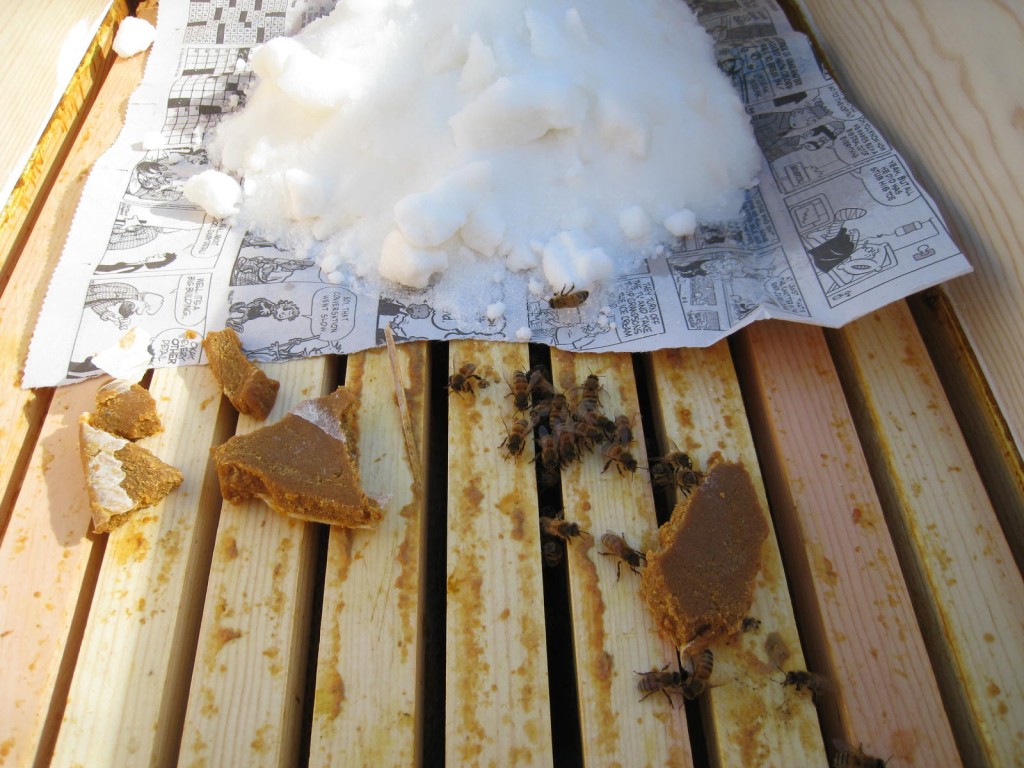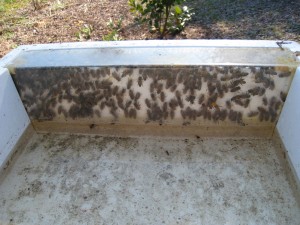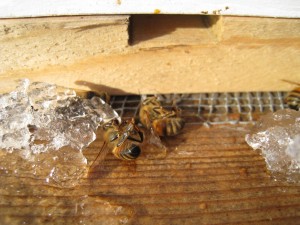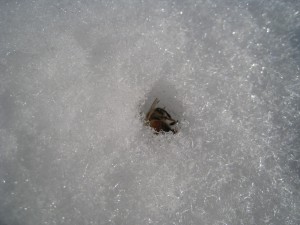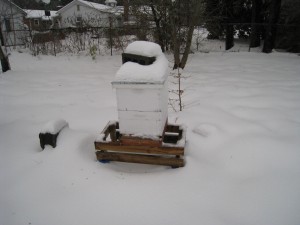It’s been a tough few weeks with miserable temperatures and a couple of spots of snow. It’s really been an unusual Winter…at least when compared to the last few years. Regardless, I was able to check my hives today and all is good, despite my constant hand wringing.
To begin with, we had a couple of bee meetings this week. The first was ERBA’s monthly meeting, which really did not have much on bees that hit home for me. But, the Richmond Beekeeper’s Association had a discussion from 1st year beekeepers and their adventures. The main thing that I picked up from the folks that spoke here was that a purchased package of bees must usually outperform a nuke of bees in the first year. I think Tom Fifer mentioned something about this back in the Fall of 2008, but I do not think I really understood the difference until I saw what these other fellow’s hives did.

To begin with, they picked up their bees in late March, whereas I picked my nuk’s up in the middle of May. I really think this must have been the biggest difference, as one fellow was actually making splits with his bees in August! But, one of the fellows lost his whole hive! He went out to check them recently and found them in a tight cluster, all dead. Kenny (who is also a member of the Richmond Beekeeping Association) said that they starved to death. He also said the problem was the Queen. This circles back around to my initial strategy of getting local bees. Hopefully, they will prove hardier (over the long haul) then these other bees. I forgot to ask the newbs if they treated their bees, as I do not treat mine with anything except for powdered sugar and a heavy dose of my own ineptness. One of these days, I will purchase a package or two just to experience that kind of thing.
But, on to the good news. When I went out to check the hives, I initially glanced at the strong Hive (they face East and I come from the West, whereas the weaker hive faces South, so it is harder to see the landing board until I am up on it.) Not much was going on here, but when I got to the weak hive, I found all sorts of bees flying about and several on the landing board. I am assuming that these are some orientation flights, but regardless of the reason, it was great to see them moving about!
When I took the top off of Hive 2, I found them busily sipping up the syrup that was still in the feeder. Several were floating in the liquid. At some point, I need to figure out how to get them out of the syrup. I carefully removed the feeder to get a look inside. I was happy to see that the cluster had not already moved up into the top deep. I had been worried that their lack of stores would mean that they would be nearly out and already eating at the last of their stores. Instead, they had yet to touch any of their capped honey in the top deep (which is only about 5 frames worth, but is better then nothing!)
I placed several pieces of pollen substitute on the top of the upper deep and left it at that. All in all, I am very impressed with Hive 2.

Hive 1, what appeared to be the stronger hive last Fall, had much less activity. A few bees were hanging around on the south side of the hive, but only one or two flying about. This may be due to the orientation of the hive. It faces East, whereas Hive 2 faces South. At any rate, I opened these gals up and found a few hanging on top of the upper Deep. From what I could tell, these bees were also primarily in the lower Deep. But, I really needed a flashlight to look down in there and be sure. I hope to check on both hives with a flashlight tomorrow.
This hive has received no food since Fall, so I decided to put a single layer of paper down over a portion of the top and dump some sugar on it. I gave it a misting with the water bottle and immediately received a couple of dive bombers attacking me at every spot. Now that I have this food on (I also gave them some pollen substitute), I am much more comfortable about everything.
All in all, this was a resounding success. I look forward to a brief look tomorrow (with my flashlight!) and will report back then.
